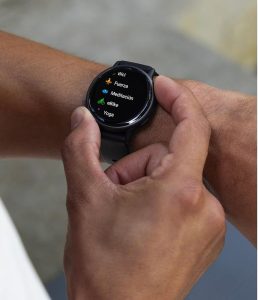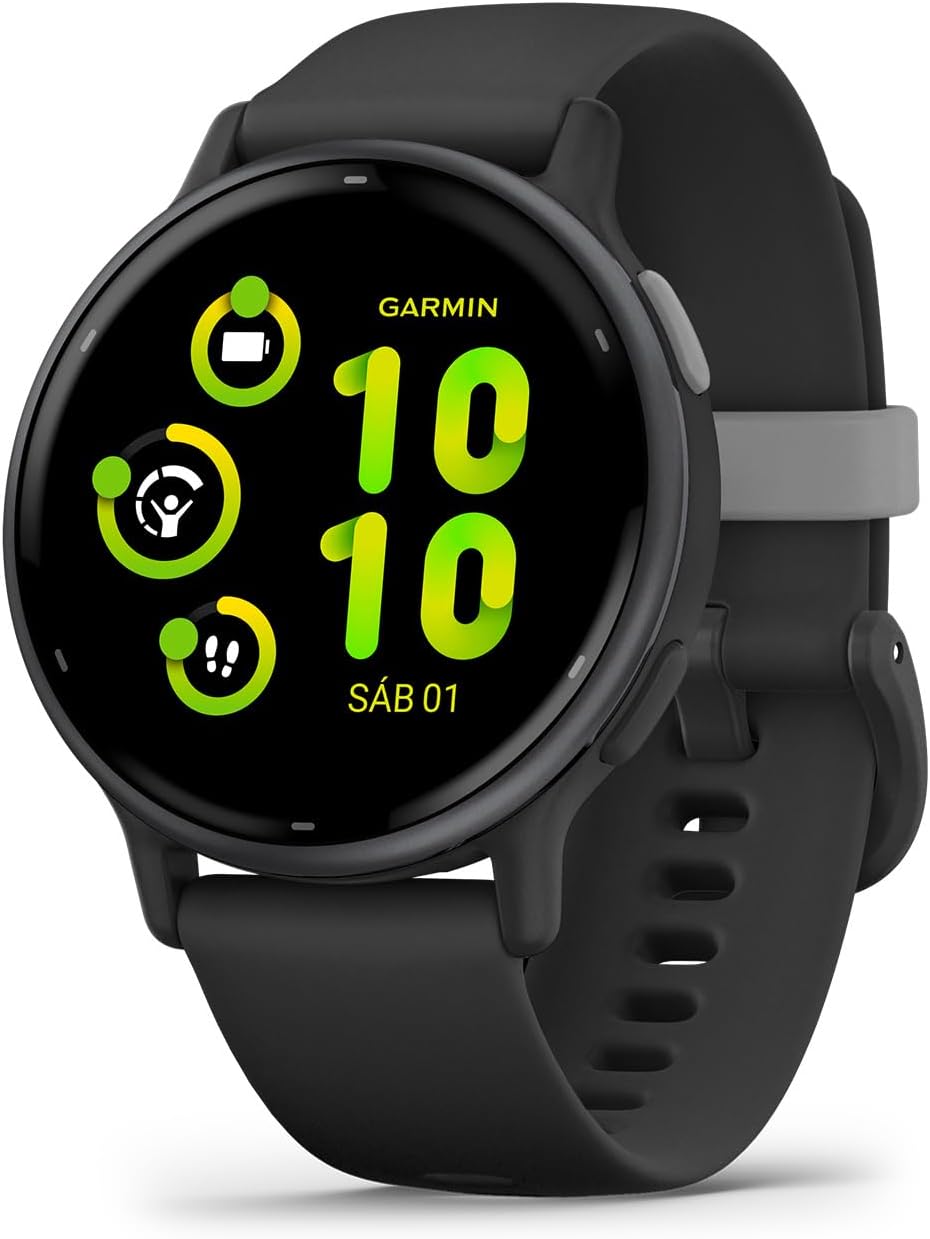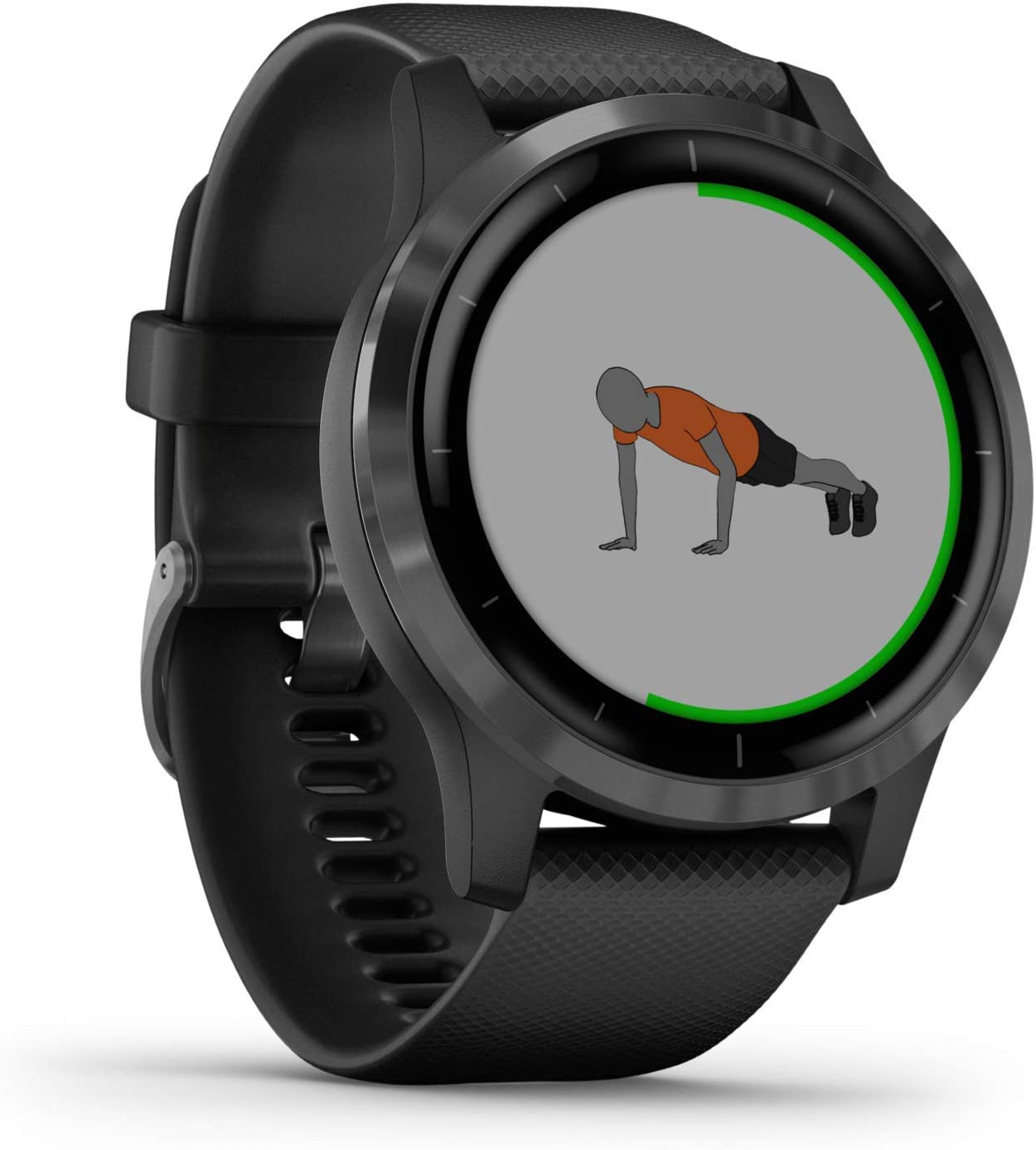|
Our recommendation! Garmin Vivoactive 5
Screen: 1.2 inches |
Top sales! Garmin Vivoactive 4
Screen: 1.3 inches |
If you are a sports fan and you like to keep track of your physical activity and your progress, you will surely be interested in wearing the best smartwatch on the market. And, without a doubt, one of the reference brands in this area is Garmin. In fact, Garmin smart watches are ones that have a more sporty focus. Therefore, it is always interesting to compare the differences when the brand launches a new model from one of its ranges. Today, we are going to do the same with two of the best-selling models: Garmin Vivoactive 5 and Garmin Vivoactive 4.
The Vivoactive range is characterized by being one of Garmin’s most affordable, since its prices are quite competitive. But what are the main differences that we see between these two models? On the one hand, the Garmin Vivoactive 5 is the first in the range to include an AMOLED screen, and that represents a very important leap in quality compared to the Vivoactive 4. Although the screen is slightly smaller, it has much higher resolution, and that is essential considering that we use it a lot outdoors, with more complex lighting conditions.
Additionally, we went from a stainless steel bezel on the Vivoactive 4 to an anodized aluminum bezel on the Vivoactive 5, and this comes with a significant weight difference. The Garmin Vivoactive 5 is a much lighter smartwatch, which is appreciated when playing sports. In addition, it has 10 more sports applications than the Vivoactive 4, and improves some of the features of the previous model. For example, the Vivoactive 5 has the ability to detect if you are napping and differentiate it from nighttime sleep analysis, something the Vivoactive 4 cannot do.
Likewise, the Garmin Vivoactive 5 has a specific function for wheelchair users. But, so you can compare for yourself which is the most interesting smartwatch, keep reading this comparison!
Garmin Vivoactive 5 vs Garmin Vivoactive 4 – Comparison Table
In the following table, you can see what the most important differences are between the two smartwatches in Garmin’s Vivoactive range. However, later, we explain all these changes in detail to help you choose.
Vivoactive 5
|
Vivoactive 4
|
|
| Dimensions | 42,2 x 42,2 x 11,1 mm | 45,1 x 45,1 x 12,8 mm |
| Weight | 36 g | 50 g |
| Colors | Lilac, black, white and blue | Dark gray and silver gray |
| Bezel Material | Anodized aluminum | Stainless steel |
| Screen type | AMOLED | Memory-in-pixel |
| Screen size | 1,2″ | 1,3″ |
| Resolution | 390 x 390 pixels | 260 x 260 pixels |
| Protection | Corning Gorilla Glass 3 | Corning Gorilla Glass 3 |
| Resistance level | 5 ATM | 5 ATM |
| Autonomy | Up to 11 days, 21 days in saving mode | Up to 8 days, 6 hours with GPS and music |
| Memory | 4 GB | 7 timed activities, 14 days of activity tracking data |
| GPS | Yes | Yes |
| Sensors | Accelerometer, thermometer, ambient light sensor, pulse oximetry, Galileo, Glonass, GPS and compass | Accelerometer, thermometer, gyroscope, compass, barometric altimeter, GPS, Glonass, Galileo, pulse oximetry |
| Connectivity | Bluetooth, ANT+, Wi-Fi | Bluetooth, ANT+, Wi-Fi |
| NFC | Yes | Yes |
| Sports modes | More than 30 | More than 20 |
| Heart rate | Yes | Yes |
| Blood oxygen saturation | Yes | Yes |
| Stress level | Yes | Yes |
| Sleep analysis | Yes | Yes |
| Menstrual cycle | Yes | Yes |
| Garmin Coach | Yes | Yes |
| Wheelchair mode | Yes | No |
A lighter design

At first glance, what we highlight most is that Garmin goes from a thicker design in the Vivoactive 4, with a stainless steel bezel that raised its weight to 50 grams, to a much lighter one. The Vivoactive 5 has an anodized aluminum bezel, which reduces its weight to 36 grams. Likewise, it is a much thinner bezel, and the strap, which is made of silicone just like the Vivoactive 4, is completely smooth. All of this makes the Vivoactive 5 a more comfortable smartwatch to wear in that you notice its weight less, and that is appreciated when practicing some sports such as swimming.
The only issue that we have found only in the Vivoactive 4 is that it has the on-screen training animation function. Speaking of swimming, it should be noted that the two smartwatches have a resistance capacity of up to 50 meters underwater. Therefore, you can use them interchangeably if you swim regularly, although it is not recommended to do so in open water.
The AMOLED screen, the great novelty
One of the most important novelties that the Garmin Vivoactive 5 brings with it is the inclusion of an AMOLED screen, unlike the memory-in-pixel screen that the Vivoactive 4 has. AMOLED technology makes the Vivoactive 5 screen have more resolution and a higher brightness capacity, which means that, outdoors, it looks much better than the Vivoactive 4 screen. Even though it is a little larger. Of course, both have Corning Gorilla Glass 3 protection, so they are quite resistant to scratches.
Battery life, another improved point
We continue analyzing the key aspects when choosing a smartwatch, and we arrive at a fundamental one, battery life. The Garmin Vivoactive 4 can last up to 8 days in standard use conditions, an autonomy that the Vivoactive 5 increases to 11 days. In addition, this model also has an energy saving mode of use, with which you can extend its autonomy up to 21 days. In particular, we have not reached that far, but even if it is 17 or 18 days, it is an important advantage over the Vivoactive 4.
Something similar happens with data storage memory. Garmin doesn’t specify what exact memory the Vivoactive 4 has, but it does say that it can store up to 14 days of activity tracking data. In the case of the Vivoactive 5, we do know that it has 4 GB memory. Is it larger than that of the Vivoactive 4? It depends on the volume of data, but, in general, it is usually higher.
Sports applications and health monitoring

The greatest use that we usually make of Garmin sports smartwatches is, precisely, to monitor our physical activity and our health parameters. The first thing that catches our attention is that the Garmin Vivoactive 5 has more than 30 sports applications installed, while the Garmin Vivoactive 4 has more than 20. In addition, there is a very interesting functionality that we only see in the Vivoactive 5, and It is wheelchair mode. This mode allows people with reduced mobility to also carry out control of their activity adapted to their conditions. On the other hand, both smartwatches have the Garmin Coach function.
When it comes to health functions, both smartwatches have the same ones, and the ones that are most interesting to users. That is, both can measure heart rate, blood oxygen saturation, stress level, menstrual cycle monitoring, and sleep monitoring. However, the Garmin Vivoactive 5 improves on some of these metrics. For example, it is capable of measuring the variation in heart rate throughout the day. And, in addition, it distinguishes sleep that belongs to nap time from night sleep, so it offers more accurate data.
Connectivity and technology, few differences

In the connectivity section, there are not many differences between the two Garmin Vivoactive smartwatches. Both are compatible with both iPhone and Android, as well as Bluetooth, Ant+ and WiFi. Likewise, they are also compatible with NFC technology, which allows contactless payments.
They also integrate GPS navigation, and the only difference we see in the technological sensors is that the Garmin Vivoactive 5 includes an ambient light sensor that the Vivoactive 4 does not have.
Which Garmin Vivoactive smartwatch is most interesting?
To check which of the two Garmin Vivoactive has the best quality-price ratio, it is important to see the price of each one. In this sense, we admit that we were surprised to see that there is hardly any economic difference between the two, when the Garmin Vivoactive 5 includes more features and improves some of those found in the Vivoactive 4. Therefore, in general terms, it seems to us that The Garmin Vivoactive 5 has a more interesting quality-price ratio.
Firstly, because it has an AMOLED screen that greatly improves the user experience. And, also, because it includes more sports applications and improves many health parameters. Rather than improving, it completes them and offers a more detailed and exhaustive analysis. The same happens with the battery, which has longer life in the Garmin Vivoactive 5.
That said, it’s only up to you to choose which of the two smartwatches is more worth it.


